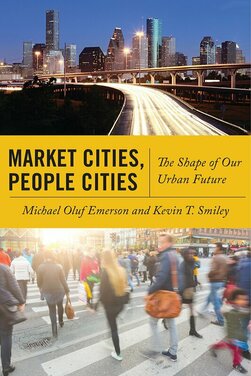ResearchMy research investigates how social processes intertwine with environmental change.
My google scholar profile can be found here. |
Research on Disaster Resilience and Vulnerability
|
My research on disaster resilience and vulnerability seeks to uncover how socio-environmental changes may lead to rising flood risks. In particular, I look at how environmental changes such as climate change link to flooding. This includes examining spatial inequalities in flooding exposure inside and outside of floodplains; one article published in Environmental Research Letters. A major advance in this work was in one of the first social science applications of climate change attribution science, where we found that as many as 50,000 residences in Greater Houston would not have been flooded if not for climate change and that these residences were disproportionatly in Latina/x/o neighborhoods; this article can be accessed free of charge in Nature Communications. Finally, my research on social dynamics shaping urbanization in Land Use Policy can be accessed free of charge here.
This work is primarily focused on Greater Houston and Hurricane Harvey, and is now bridging to Louisiana. This research is funded through an Early-Career Research Fellowship through the Gulf Research Program of the National Academies of Sciences, Engineering, and Medicine. It also has lead to being named a Fellow in the NSF's Humans, Disasters, and the Built Environment (HDBE) Enabling the Next Generation of Hazards and Disasters Researchers. New research on climate change attribution has begun with grant support from from an NSF CAREER grant from the HDBE program, and the NSF National Center for Atmospheric Research's (NCAR) Early-Career Innovators Program. Additionally, research (co-authored with Junia Howell and James R. Elliott) around disaster vulnerability and community change was published in Population and Environment; a version free of charge can be found here. I have also authored work on social capital: (1) how it differentially shapes mental health outcomes after Hurricane Harvey (published in Disasters) and (2) how social capital formation post-disaster is affected by disaster impacts (in Disaster Medicine and Public Health Preparedness). Further, my co-authors and I have also published a review in Sociology Compass of the field of the sociology of disasters, where we champion the idea of feedbacks to expand disasters research moving forward. I also have begun research on local impacts of Hurricane Ida in Louisiana published in Transportation Research Record. My equal co-authored book project titled Market Cities, People Cities (NYU Press, 2018) with Michael O. Emerson investigates two cities -- Copenhagen and Houston -- using a mixed-methodological perspective that draws on more than 5,000 survey responses and a diverse range of qualitative data. We believe that cities are diverging in the modern world: either they are fundamentally oriented toward markets or toward people. We analyze the implications of living in a market city (like Houston) and a people city (like Copenhagen), and how each city justifies their local configurations of capitalism. This project has also yielded article publications in Cities, Sociological Forum, Environmental Sociology, Urban Research & Practice. and The Journal of Urbanism. |
Air Pollution and Environmental Justice |
This research centers on the immense variation in toxic air across metropolitan areas, and how novel data and theoretical advances can be utilized to analyze these disparities. I do so in four primary ways. First, I utilize a critical view of social capital that distinguishes between the connecting and isolating nature of social ties in a community, and how they relate in countervailing ways to industrial pollution; this work is published in Sociological Perspectives and can be found free of charge here. Second, I connect religious contexts to environmental inequality, investigating oft-theorized but little-tested assumptions about the linkages between the two; this work is published in The Sociological Quarterly. Third, I show how asthma risks are geographically clustered and overlaps with patterns of residential segregation and environmental injustice; this work is published in Southeastern Geographer. Fourth, I investigate how the manufacturing histories of cities shapes contemporary exposure to toxic air; this work is published in Sociological Inquiry. Fifth, I worked on co-authored research on how commuting inequalities and poverty segregation relate to industrial air pollution; this work is published in American Behavioral Scientist and Social Currents.
|
Inequalities and Public Space
|
In our Urban Studies piece, we show how Memphis is attempting to radically change its cultural image by emphasizing bicycling. My co-authors and I highlight the limitations of changing the character of place, and how bicycling is a limited antidote to wider inequalities. We discuss the implications for creative class discourses, gentrification, and the city's racial history.
Together with four undergraduate co-authors as part of a project in conjunction with the Houston Parks and Recreation Department, our 2016 Environmental Justice piece analyzes two important factors in literature about urban parks: access and amenities. But we do so in a novel way by directly surveying respondents in disadvantaged neighborhoods about their preferences for access or amenities. While much of the present literature focuses on access, our respondents are especially worried about amenities, and concern themselves with issues of access mostly as a secondary concern. I also conducting (with Yulin Yang) research on the attitudes of urban Europeans on immigration and beyond, with a particular emphasis on how the group size of immigrant groups in European cities relates to anti-immigrant prejudice, trust, and perceptions of safety; this work is published in Social Science Research, International Journal of Sociology, and the International Journal of Intercultural Relations; a free version of IJIR piece can be found here. |

